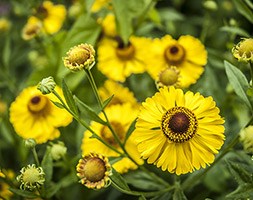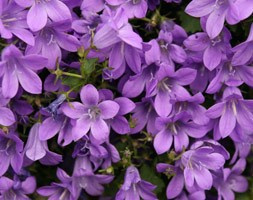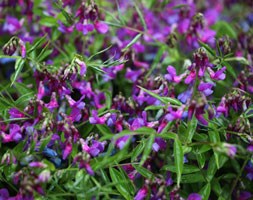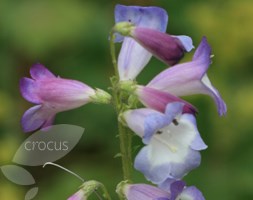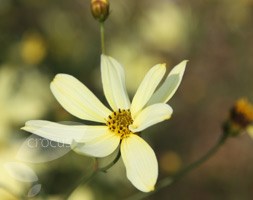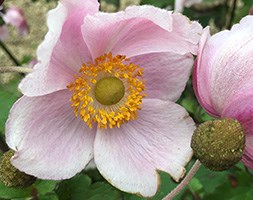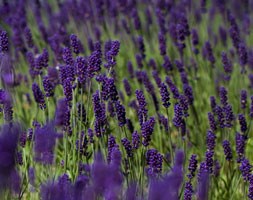Price reductions at Crocus
by Sarah - August 21st, 2014.Filed under: Crocus, Price Reductions.
Crocus has cut the price of these lines
Ranunculus ‘Paeony mixed’ (ranunculus bulbs) was £3.99 now £1.99
Position: full sun Soil: fertile, moist but freely draining Rate of growth: average to fast Flowering period: May to June Flowering colour: mixed Hardiness: fully hardy Bulb size: 7/8 Great dollops of colour top the upright stems of this fantastic collection of ranunculus from early summer. They come in lots of vibrant shades including red, pink, yellow, orange and white, so add lashings of colour to the bedding scheme. They also look smart in pots. Garden care: Plant the tallon-like corms in autumn or spring 8cm deep and a similar distance apart with their ‘fingers’ facing downwards.
Anemone coronaria De Caen Group Mixed (anemone bulbs) was £4.99 now £2.49
Position: full sun Soil: light, sandy soil Rate of growth: average Flowering period: March to April (or June to July if planted in spring) Flower colour: red, blue-violet and white Other features: useful as cut flowers Hardiness: fully hardy Bulb size: 5/6 Shallow bowl-shaped flowers in shades of red, blue-violet and white appear from March to April above the deeply divided, fresh green leaves. These pretty poppy-flowered anemones make charming cut flowers. They are ideal for a sheltered, sunny site. Garden care: Plant pre-soaked tubers 5-8cm (2-3in) deep and 15cm apart in September or October in light, sandy soil in a sunny, protected site. Cover with a cloche or dry mulch to protect against extreme winter weather. If you want them to flower in summer, the tubers can be planted out in spring.
Helenium ‘The Bishop’ (sneezeweed) was £5.99 now £4.90
Position: full sun Soil: fertile, moist but well-drained soil Rate of growth: average Flowering period: July to September Hardiness: fully hardy Providing long-lasting colour from midsummer, the flowerheads of these tough daisies appear on branching, leafy stems from midsummer. Golden-yellow ray florets surround the prominent brown centre. Garden care: Heleniums are versatile plants that love plenty of sunshine and moist soil. They rarely suffer from pests or diseases, however young plants do need to be protected from slug attack. Tall varieties need to be staked. To encourage the plant to repeat flower deadhead back to side shoots that have flower buds emerging. Cut back by half after flowering to help prevent mildew. Cut down to the ground in late winter. Every two to three years divide the plants in spring to keep them in top condition. When replanting add loads of well-rotted organic matter to the soil to feed them and keep them moist.
Campanula portenschlagiana (dalmatian bellflower) was £8.99 now £5.99
Position: full sun or partial shade Soil: moist, well-drained, fertile soil Rate of growth: fast-growing Flowering period: July and August Hardiness: fully hardy Spreading mounds of deep purple, funnel-shaped flowers appear in July and August with heart-shaped to kidney-shaped, mid-green leaves that are retained all year. These low-growing Dalmatian bellflowers look wonderful cascading over a sunny, well-drained, rock garden or raised bed, used as edging or tucked in between paving stones or a dry-stone wall. This campanula is very vigorous, so it’s best planted away from smaller, less competitive plants. Garden care: Protect the tender foliage from slug damage using environmentally friendly slug pellets or beer traps. During the growing season water freely.
Lathyrus vernus (spring vetchling) was £8.99 now £5.99
Position: full sun or lightly dappled shade Soil: fertile, humus-rich, well-drained soil Rate of growth: average Flowering period: March to May Flower colour: reddish purple ageing to purple-blue Hardiness: fully hardy A low-growing, bushy perennial that produces a very pretty display of purple-blue, pea-like flowers in spring. This is an excellent plant for kick-starting the display in the herbaceous border, where it will associate well with spring flowering Lamprocapnos (Dicentra), Omphalodes, Primula and Pulmonarias. After the flowers have faded the foliage starts to die back and by midsummer it is all but gone, so make sure you plant it with late summer flowering perennials, which will grow into the gap it leaves behind. Garden care: Incorporate lots of well-rotted organic matter in the planting hole. To make sure you keep the plants in top condition spray regularly with a fungicide as all sweet peas are prone to mildew, and feed with a high potash fertiliser, such as Tomorite for plenty of flowers. Don’t forget to keep cutting the flowers so that you get plenty more!
Penstemon ‘Alice Hindley’ (beard tongue) was £7.99 now £5.99
Position: full sun or partial shade Soil: fertile, well-drained soil Rate of growth: average Flowering period: July to September Flower colour: pale lilac-blue Hardiness: frost hardy (will need winter protection in cold areas) A large leaved penstemon that bears big, bell-shaped flowers from midsummer to autumn. It is one of the oldest hybrids in cultivation today, having first been introduced in 1931. It was first discovered by the nursery John Forbes of Hawick, who from 1870 until 1968 was the biggest Penstemon growers in the world. The fact that it has stood the test of time will give an indication of its many good qualities, and this has been backed up by being awarded the Royal Horticultural Society’s Award of Garden Merit. The soft lilac-blue shades are tinged mauve-pink outside and have a white throat, and they look great in a cool themed border. Garden care: Remove the faded blooms regularly to prolong flowering. Apply a dry mulch around the base of the plant to protect the roots from frost damage in autumn. Leave the old foliage to protect the new shoots from frost and then cut it back by a third in spring.
Coreopsis verticillata ‘Moonbeam’ (tickseed) was £7.99 now £5.99
Position: full sun or partial shade Soil: fertile, well-drained soil Rate of growth: average Flowering period: July to September Hardiness: fully hardy This lovely, exceptionally showy, long-flowering, pale yellow tickseed is perfect for extending the season of a summer border in sun or partial shade. As long as it’s deadheaded regularly, it produces a succession of slender-stemmed, single, daisy-like flowers with orange-yellow centres from June to September. The flowers are also attractive to bees and butterflies. Garden care: Deadhead regularly to prolong flowering and water well during hot, dry spells. Cut the faded flower-stems back down to ground level in autumn and compost.
Anemone x hybrida ‘September Charm’ (Japanese anemone) was £6.99 now £5.99
Position: full sun or partial shade Soil: moist, fertile, humus-rich soil Rate of growth: average Flowering period: July to September Hardiness: fully hardy A fabulous plant for bringing colour to the garden in late summer and autumn, this anemone has masses of large, rosy pink, cup-shaped flowers on tall, wiry stems from July to September. One of the most reliable and free-flowering of the Japanese anemones, these have distinctive purple-tinted stems and outer petals, which contrast beautifully with the pale pink inner petals. The leaves are pretty, too vine-like, dark green, and semi-evergreen. They are perfect for areas of partial shade towards the back of a moist herbaceous or mixed border. Garden care: Cut back the stalks after the flowers have faded. Tidy up old dead leaves in March. Apply a generous 5-7cm mulch of well-rotted garden compost or manure around the base of the plant in spring. Avoid moving the plant since it resents disturbance. Where necessary lift and divide congested clumps in early spring.
Lavandula angustifolia ‘Hidcote’ (lavender) was £6.99 now £5.99
Position: full sun Soil: moderately fertile, well-drained soil Rate of growth: average Flowering period: July to September Hardiness: fully hardy A compact form of the popular English lavender, named after plantsman Laurence Johnston’s famous Arts and Crafts garden in Gloucestershire. It produces dense spikes of fragrant, deep violet summer flowers above slender, aromatic, silvery-grey leaves. It is possibly the best lavender for edging paths and borders and the aromatic foliage perfumes the air if you brush against it. It also works well in a gravel garden, or clipped into a formal sphere for a contemporary look. The flower-spikes are highly attractive to bees and other nectar-loving insects. Garden care: Cut back the stalks after the flowers have faded. Carefully trim back in April, taking care not to cut into old wood.









